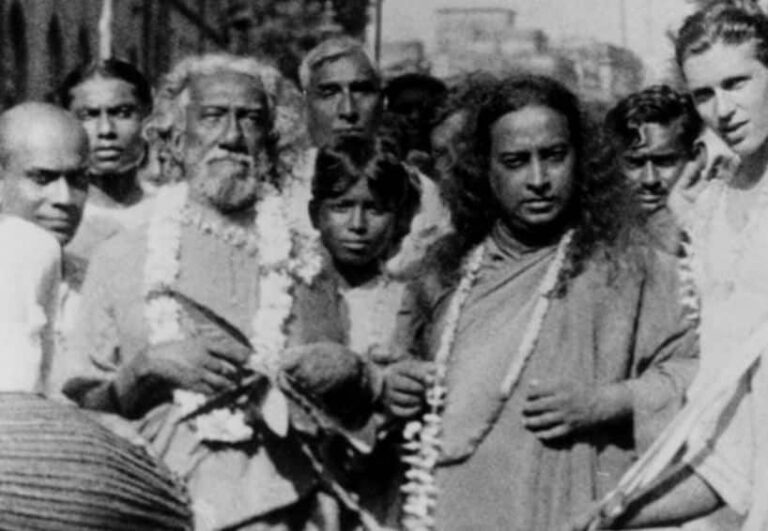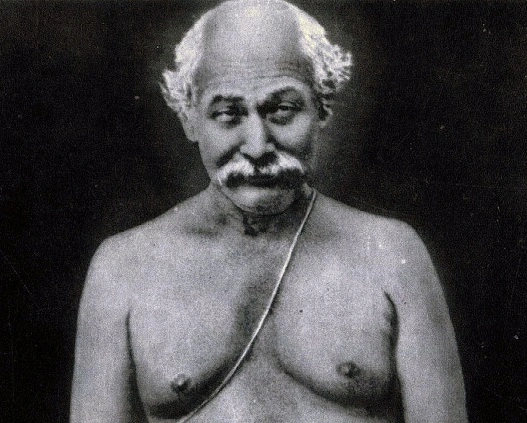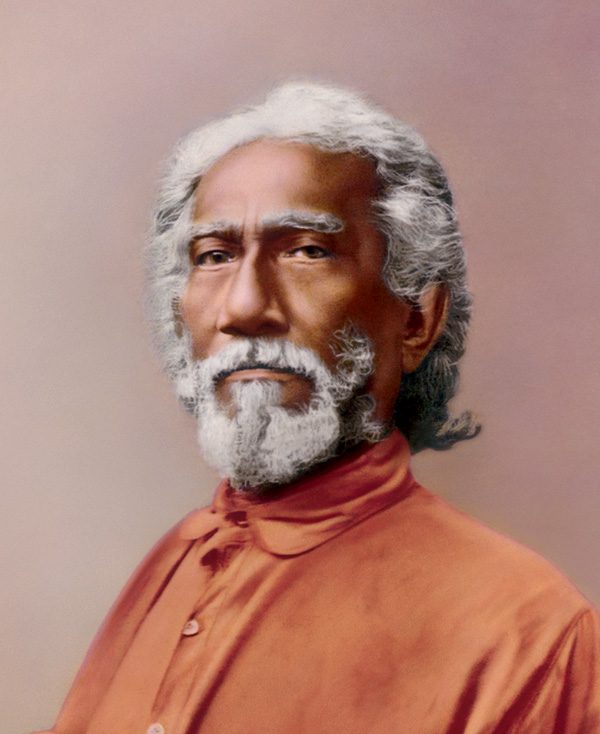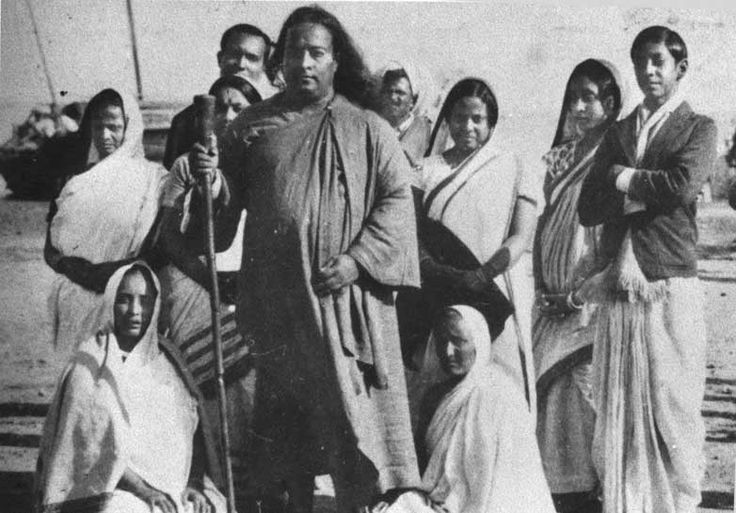How to Fix Your Meditation – 7 Hidden Habits That Sabotage Your Practice
Discover the subtle behaviors that block your spiritual progress and learn authentic strategies from Paramahansa Yogananda’s Self-Realization Fellowship teachings to transform your meditation experience
When Meditation Becomes a Struggle Instead of Sanctuary
Meditation should be a time of profound peace, inner communion, and spiritual renewal. Yet countless sincere seekers find themselves battling restless minds, physical discomfort, and sessions that leave them more frustrated than fulfilled. If you’ve ever wondered why your meditation practice feels like an uphill battle despite your genuine desire for spiritual growth, you’re not alone.
Paramahansa Yogananda, the great master who brought the ancient science of Kriya Yoga to the West through Self-Realization Fellowship, understood that successful meditation extends far beyond simply sitting quietly with closed eyes. In his comprehensive teachings, Paramahansa Yogananda revealed how our daily habits, mental patterns, and approach to spiritual practice either support or undermine our ability to commune with the Divine within.
The challenge isn’t lack of spiritual potential—every soul possesses infinite capacity for realization. Rather, most meditation struggles stem from unconscious habits that create resistance to the very stillness we seek. These sabotaging patterns, often developed over years of living in our fast-paced modern world, can transform what should be a sanctuary of divine communion into a battlefield of mental agitation.
As Brother Govindananda from Self-Realization Fellowship teaches, mastering our habits is fundamental to spiritual progress. In his recorded talk “Mastering Your Habits,” he emphasizes that transformation begins with small, consistent changes rather than attempting to revolutionize everything at once. This wisdom applies directly to meditation practice—by identifying and gradually transforming the habits that block our spiritual receptivity, we can unlock the profound states of consciousness that Yogananda promised are our divine birthright.
This comprehensive guide explores seven specific habits that sabotage meditation effectiveness, each accompanied by practical transformation strategies rooted in Paramahansa Yogananda’s authentic teachings. Whether you’re a beginning student of Self-Realization Fellowship lessons or a longtime practitioner seeking to deepen your communion with God, understanding and addressing these hidden barriers will revolutionize your spiritual practice.
Understanding the Science of Spiritual Habits
Before examining specific sabotaging habits, it’s essential to understand Paramahansa Yogananda’s perspective on habit formation and transformation. In his teachings, Paramahansa Yogananda explained that habits operate on three levels: physical, mental, and spiritual. Each meditation session either reinforces positive spiritual habits or allows negative patterns to continue dominating our consciousness.
Paramahansa Yogananda taught that the mind functions like a gramophone record, playing the same mental patterns repeatedly until we consciously choose to create new grooves. Meditation provides the opportunity to step back from automatic reactions and choose responses aligned with our highest spiritual aspirations. However, when we approach meditation with the same scattered mental habits we use throughout the day, we miss this transformative opportunity.
The key insight from Self-Realization Fellowship teachings is that habits are not permanent fixtures of personality—they are learned patterns that can be unlearned and replaced with life-enhancing alternatives. As Yogananda frequently reminded his students, “Environment is stronger than will power,” which means creating the right conditions for meditation is often more important than relying on determination alone.
Habit #1: Digital Overstimulation – The Modern Mind’s Greatest Challenge
The Problem: Scattered Attention in a Hyperconnected World
In Yogananda’s time, the primary obstacles to meditation were physical hardships and basic mental restlessness. Today’s practitioners face an unprecedented challenge: digital overstimulation that fragments attention and keeps the nervous system in chronic activation. The constant stream of notifications, social media updates, and digital entertainment creates what Yogananda would have called “sense-slavery”—a condition where consciousness becomes addicted to external stimulation.
When we sit to meditate after hours of digital consumption, our minds carry this scattered energy into practice. The result is meditation sessions dominated by mental chatter, inability to concentrate, and frustration with our apparent lack of spiritual progress. This isn’t a personal failing—it’s the natural consequence of training our attention to constantly jump between multiple stimuli.
Modern neuroscience confirms what Yogananda taught about attention and consciousness. The brain develops neural pathways based on repeated patterns of use. Hours spent multitasking between screens literally rewires our brains for distraction, making the sustained inner focus required for deep meditation increasingly difficult.
Creating Sacred Digital Boundaries
Self-Realization Fellowship emphasizes the importance of creating conditions that support spiritual practice. Based on Yogananda’s teachings about environment and consciousness, here are specific strategies for addressing digital overstimulation:
Establish Sacred Time Periods
Create daily periods of complete digital silence, especially before and after meditation. Yogananda taught that the mind requires time to settle from external activity before it can turn inward effectively. Implement a “digital sunset” at least one hour before your evening meditation, and protect the first hour after waking from all electronic devices.
Practice Conscious Technology Use
Rather than unconsciously consuming digital content throughout the day, bring the same mindfulness you cultivate in meditation to your technology interactions. Before picking up your phone or opening a social media app, pause and ask: “Is this supporting my spiritual development or scattering my consciousness?”
Weekly Digital Fasting
Following the SRF tradition of setting aside special times for spiritual focus, implement a weekly 24-hour period of complete digital fasting. Use this time for extended meditation, reading Yogananda’s writings, or spending time in nature. Notice how this affects your mental clarity and meditation quality.
Morning Protection Protocol
Yogananda emphasized the importance of beginning each day with spiritual practices. Protect your morning meditation by avoiding all digital devices until after your spiritual practices are complete. This preserves the natural stillness of mind that exists upon waking and allows your meditation to set the tone for the entire day.
Habit #2: Inconsistent Practice Timing – Disrupting Your Spiritual Rhythm
The Problem: Fighting Natural Law Instead of Working With It
One of Yogananda’s most fundamental teachings concerns the importance of regularity in spiritual practice. In the Self-Realization Fellowship lessons, he repeatedly emphasizes that consistency creates the natural rhythm that allows consciousness to slip easily into meditative states. When meditation timing varies constantly, we work against this natural law rather than with it.
Many practitioners meditate sporadically—sometimes morning, sometimes evening, sometimes skipping days entirely based on mood or schedule. This approach prevents the nervous system from developing what Yogananda called “spiritual habits” that naturally draw consciousness inward. It’s like trying to train for a marathon by running occasionally whenever you feel like it—progress remains minimal because the body never adapts to the routine.
The deeper issue is that irregular practice reinforces the very mental patterns meditation is designed to transform. When we meditate only when convenient or when we feel like it, we strengthen the ego’s control over our spiritual life. Yogananda taught that true spiritual freedom comes from choosing our responses based on spiritual principles rather than emotional impulses.
Establishing Sacred Rhythm
Self-Realization Fellowship provides specific guidance for creating consistent meditation practice:
Choose Your Sacred Time and Protect It
Select one specific time for daily meditation and guard it as sacred. Yogananda consistently recommended early morning practice, ideally between 4:00 and 6:00 AM, because the world’s vibrations are most peaceful and your mind hasn’t yet been scattered by daily activities. However, the most important factor is consistency—the same time every day is more valuable than the “perfect” time practiced irregularly.
The 21-Day Foundation Building
Following Self-Realization Fellowship principles of gradual spiritual development, commit to meditating at your chosen time for 21 consecutive days. This period allows new neural pathways to form and begins establishing meditation as an automatic response rather than a willpower-dependent decision. Start with whatever duration feels sustainable—even 10 minutes consistently practiced is more beneficial than longer sessions done sporadically.
Create Environmental Cues
Yogananda taught that external conditions influence internal states. Create environmental cues that signal meditation time: a specific location, lighting arrangement, or preparation ritual. These external anchors help trigger the meditative state more easily and reinforce the habit of regular practice.
Spiritual Accountability
Consider the Self-Realization Fellowship tradition of group support and accountability. Whether through local meditation groups, online communities of fellow practitioners, or simply keeping a practice journal, having external accountability supports consistency while honoring the community aspect of spiritual development that Yogananda valued.
Habit #3: Perfectionist Expectations – The Ego’s Spiritual Trap
The Problem: Achievement Mentality in Surrender Practice
Perhaps no habit sabotages meditation more subtly than approaching it with perfectionist expectations. Many practitioners, influenced by achievement-oriented Western culture, bring goal-seeking mentality to their spiritual practice. They expect immediate transcendental experiences, become frustrated when thoughts arise, or judge sessions as “good” or “bad” based on temporary states experienced during sitting.
This perfectionist approach directly contradicts Yogananda’s core teaching about meditation: it is fundamentally about surrender, not achievement. In his commentary “God Talks With Arjuna,” he explains that meditation is the process of offering our personal will to Divine Will. When we meditate with grasping expectations or demanding attitudes, we strengthen the very ego-consciousness that meditation is designed to dissolve.
The deeper spiritual issue is that perfectionist expectations keep us locked in duality—the very consciousness of separateness that creates suffering. True meditation, as taught in Self-Realization Fellowship, is about transcending the sense of separate self that judges, compares, and evaluates experiences. When we approach practice with acceptance rather than achievement, we create the inner conditions for genuine spiritual experience.
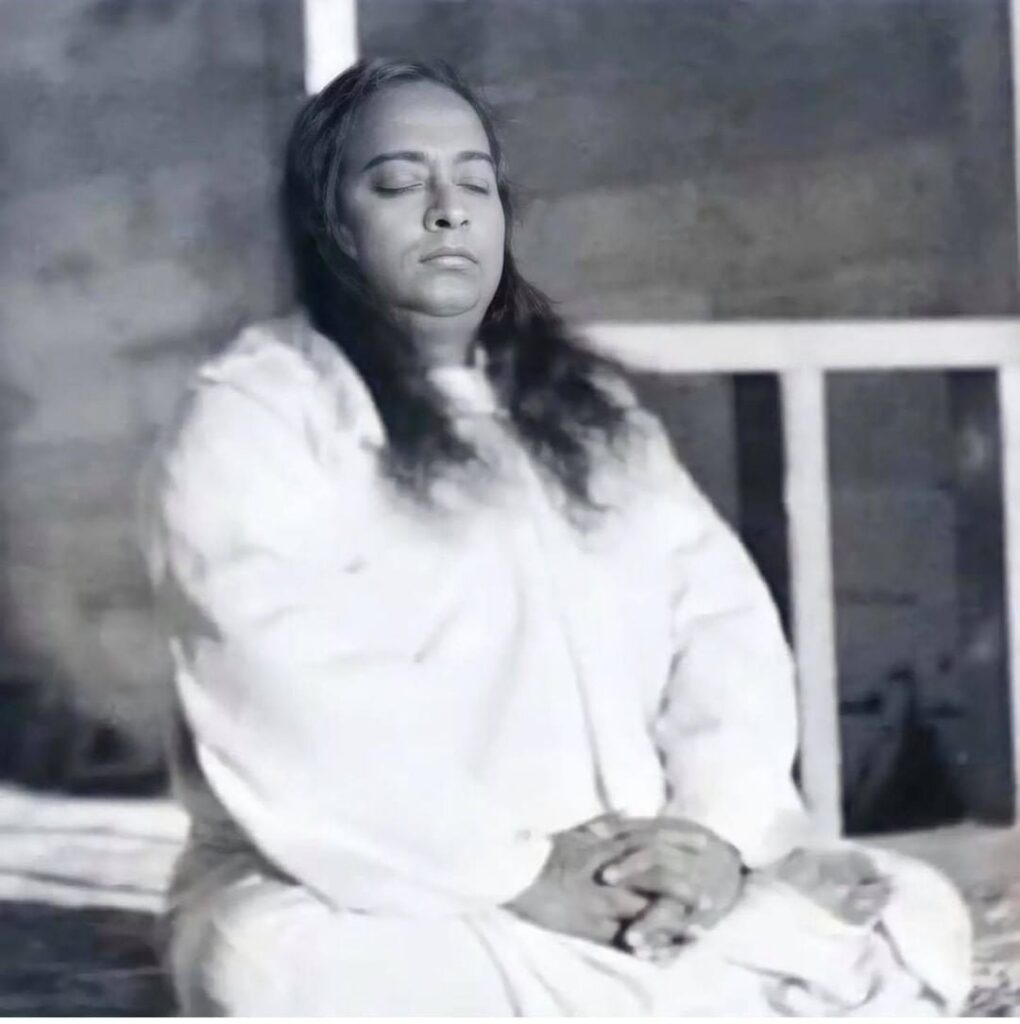
Cultivating Divine Surrender
Embrace Process-Oriented Practice
Yogananda taught that the journey itself is the destination in spiritual life. Reframe each meditation session as perfect regardless of its apparent content. A session filled with thoughts where you notice the wandering mind is actually a successful meditation—the awareness of distraction is awareness itself, which is the goal of practice.
Develop Devotional Attitude
In Self-Realization Fellowship teachings, devotion (bhakti) is emphasized as essential for spiritual progress. This doesn’t mean emotional sentiment, but rather the willingness to surrender personal preferences to divine guidance. Approach each meditation with the attitude: “Thy will, not my will, be done.” This shift from demanding specific experiences to accepting whatever arises transforms practice from effort to grace.
Practice Witness Consciousness
Yogananda taught the technique of developing “witness consciousness”—the ability to observe mental and emotional states without identifying with them. When thoughts, emotions, or physical sensations arise during meditation, practice becoming the neutral observer rather than getting caught in judgment about their presence.
Celebrate Subtle Progress
Learn to recognize and appreciate the quiet victories that indicate genuine spiritual development: decreased reactivity to daily stresses, moments of spontaneous peace throughout the day, increased compassion for others’ shortcomings, or simply the growing desire to meditate regularly. These subtle changes often matter more than dramatic experiences during sitting.
Habit #4: Improper Physical Preparation – Neglecting the Body-Temple
The Problem: Ignoring the Foundation of Spiritual Practice
Many Western practitioners approach meditation as purely mental activity, neglecting the crucial role of physical preparation in creating optimal conditions for inner communion. This oversight ignores Yogananda’s comprehensive approach to spiritual practice, which always included proper preparation of the body as the temple of consciousness.
Poor posture, physical tension, and inadequate preparation create ongoing distractions that fragment concentration throughout meditation. When the body is uncomfortable or energetically unbalanced, it demands attention that should be available for inner focus. Additionally, physical discomfort activates the nervous system’s stress response, making the relaxation necessary for deep spiritual states nearly impossible to achieve.
Yogananda understood that consciousness operates through the physical vehicle, and optimal spiritual practice requires harmonious cooperation between body, mind, and soul. The Energization Exercises he taught serve this purpose—they prepare the body-temple to support rather than hinder the consciousness seeking to turn inward.
Comprehensive Physical Preparation
Master the Energization Exercises
The Energization Exercises taught in Self-Realization Fellowship lessons are specifically designed to prepare the body for meditation. These unique movements consciously direct life force (prana) throughout the physical form, creating the ideal energetic foundation for deep inner focus. Practice these exercises before each meditation session to optimize your body’s receptivity to spiritual states.
Establish Proper Meditation Posture
Yogananda emphasized the importance of keeping the spine naturally erect during meditation, as this allows the life force to flow freely between the brain and the rest of the body. Invest in proper meditation support—whether a quality cushion, meditation bench, or chair that maintains spinal alignment without strain. Your comfort during practice directly impacts your ability to forget the body and focus within.
Pre-Meditation Physical Preparation
Spend 5-10 minutes before sitting in gentle stretching or yoga asanas, paying special attention to areas that commonly create tension: hips, shoulders, neck, and lower back. This physical preparation helps release accumulated stress and creates the bodily stillness that supports mental stillness.
Progressive Relaxation Technique
Begin each session with systematic relaxation, consciously releasing tension from head to toe. This technique, taught in SRF lessons, creates the physical foundation necessary for consciousness to withdraw from bodily awareness and focus on inner spiritual experience.
Habit #5: Shallow Breathing Patterns – Missing the Bridge to Divine Consciousness
The Problem: Ignoring the Life Force Connection
Breath regulation (pranayama) holds central importance in Yogananda’s meditation teachings, yet many practitioners attempt to still the mind without first gaining control over their breathing patterns. This oversight misses what he called the intimate connection between breath, life force, and consciousness. Shallow, irregular, or unconscious breathing creates subtle mental agitation that prevents the deep spiritual states meditation is designed to produce.
In Self-Realization Fellowship teachings, breath is understood as the external manifestation of prana (life force), which directly influences mental states. Anxious breathing patterns create anxious thoughts; calm, controlled breathing naturally produces calm mental states. When we attempt meditation without conscious breath regulation, we’re trying to still the mind while leaving its primary control mechanism unaddressed.
The spiritual significance runs deeper than stress management. Yogananda taught that mastering the breath provides direct access to life force, which is the bridge between physical consciousness and spiritual awareness. Through proper breathing techniques, practitioners can learn to withdraw life force from the senses and redirect it toward inner spiritual centers, facilitating the profound meditative absorption he called “samadhi.”
The SRF Solution: Mastering Life Force Through Breath
Learn Fundamental Pranayama Techniques
Self-Realization Fellowship lessons provide specific breathing methods that prepare consciousness for deep meditation. Begin with basic pranayama practices that establish conscious control over life force:
- Even-count breathing: Establish rhythmic patterns that calm the nervous system
- Lengthened exhalation: Gradually extend exhales to activate the relaxation response
- Natural breath observation: Develop sensitivity to the breath’s natural rhythm without force
Integrate Breath Awareness Into Daily Life
Yogananda emphasized that spiritual practice should extend beyond formal meditation periods. Throughout the day, periodically check your breathing patterns. Are they shallow and stressed, or deep and calm? Use brief moments of conscious breathing to maintain the peaceful awareness cultivated during morning meditation.
Progress Toward Advanced Techniques
As your basic pranayama skills develop, you may feel drawn to the more advanced breathing methods taught in Kriya Yoga. These sacred techniques, available through Self-Realization Fellowship after appropriate preparation, provide direct methods for controlling life force and achieving the deep meditative absorption that leads to divine realization.
Breath as Meditation Anchor
Use conscious breathing as your primary meditation focus. When the mind wanders during practice, gently return attention to the breath. This creates unified practice that’s both grounding and transcendent, following the traditional approach taught in authentic spiritual lineages.
Habit #6: Lack of Proper Mental Preparation – Rushing Into Sacred Practice
The Problem: Carrying Worldly Consciousness Into Spiritual Practice
One of the most common meditation mistakes is attempting to transition directly from active daily life into deep spiritual practice without appropriate mental preparation. This approach ignores the fundamental principle that consciousness requires time and intention to shift from external to internal awareness.
Modern life conditions our minds for constant external focus—solving problems, processing information, and responding to demands. When we sit to meditate immediately after busy activities, we carry this externalized mental momentum into practice. The result is meditation sessions dominated by planning, worry, and mental restlessness that leaves practitioners feeling unsuccessful despite their sincere efforts.
Yogananda understood that the mind operates according to specific laws, including the principle that consciousness tends to continue in whatever direction it has been flowing. This is why he structured Self-Realization Fellowship meditation guidelines to include preparation periods that consciously redirect attention from worldly concerns toward spiritual awareness.
Sacred Transition Practices
Establish Pre-Meditation Rituals
Create a consistent routine that signals to your consciousness that meditation time has begun. This might include lighting a candle or incense, reading a brief passage from Yogananda’s writings, or spending a few minutes in prayer or devotional chanting. These rituals serve as bridges between ordinary consciousness and the receptive awareness necessary for spiritual communion.
Mental Clearing Technique
Before beginning formal meditation, spend 2-3 minutes consciously acknowledging and releasing the day’s concerns. Yogananda taught that we cannot simply ignore our worldly responsibilities, but we can consciously set them aside during spiritual practice. Mentally review any worries or pending tasks, then deliberately place them in God’s hands for the duration of your meditation.
Devotional Reading
Spend 5-10 minutes before meditation reading from Yogananda’s writings or other authentic spiritual texts. This practice, recommended in SRF guidelines, helps attune your consciousness to spiritual vibrations and creates the proper mental atmosphere for inner communion. Choose passages that inspire devotion and remind you of your spiritual goals.
Progressive Interiorization
Practice what Yogananda called “interiorization”—the conscious process of withdrawing attention from external awareness and focusing within. Begin by sitting quietly with eyes closed, then progressively withdraw attention from sounds, physical sensations, and finally from thoughts themselves, until awareness rests in the peaceful center of being.
Habit #7: Attachment to Spiritual Experiences – The Advanced Practitioner’s Trap
The Problem: Spiritual Materialism Disguised as Devotion
As practitioners advance in their meditation practice, a subtle but dangerous habit can develop: attachment to spiritual experiences. This might manifest as seeking specific states, comparing current sessions to previous highlights, or becoming discouraged when meditation feels ordinary rather than transcendent. While this habit appears more sophisticated than basic restlessness, it represents what Yogananda called “spiritual materialism”—treating divine communion like an acquisition rather than a surrender.
The fundamental issue is that attachment to any experience, even spiritual ones, keeps consciousness locked in the seeking mind rather than opening to the receiving heart. When we meditate with specific expectations about what should happen, we create subtle tension that blocks the very surrender necessary for authentic spiritual experience.
Yogananda taught that the highest spiritual states come not through effort or seeking, but through complete surrender of personal will to Divine Will. This paradox—that we must cease seeking in order to find—represents one of the most challenging aspects of advanced spiritual practice and requires mature understanding of meditation’s true purpose.
Cultivating Divine Surrender
Practice Unconditional Presence
Approach each meditation session with the sole intention of being present with whatever arises, whether thoughts, emotions, peace, or apparent emptiness. Replace goal-oriented sitting with presence-oriented sitting, where the only success is showing up with sincerity and acceptance.
Develop Guru-Disciple Consciousness
In Self-Realization Fellowship tradition, meditation is understood as communion with the guru’s consciousness and, through that connection, with Divine Consciousness itself. Approach practice with the attitude of offering your meditation to Yogananda and the line of gurus, releasing personal desire for specific experiences in favor of receiving whatever divine guidance emerges.
Cultivate Patience with Divine Timing
Yogananda frequently reminded students that spiritual development follows divine timing rather than personal preference. Some periods of practice may feel dry or challenging, while others bring profound peace or insight. Both are necessary parts of spiritual development, and resistance to either creates unnecessary suffering.
Transform Seeking Into Offering
Instead of asking “What can I get from this meditation?” approach practice with “What can I offer in this meditation?” This shift from receiving-mode to giving-mode naturally dissolves the ego-grasping that blocks authentic spiritual experience while opening consciousness to divine grace.
Additional Supporting Practices for Meditation Success
Creating Optimal Environmental Conditions
Following Self-Realization Fellowship guidelines for creating sacred space, establish a specific location dedicated exclusively to meditation. This area should be clean, quiet, and free from distractions. Having a consistent physical environment helps trigger the meditative state more easily and demonstrates respect for the sacred nature of your spiritual practice.
Consider including elements that inspire devotion: a picture of Yogananda or other realized masters, fresh flowers, or objects that remind you of your spiritual aspirations. However, avoid creating elaborate altars that might become distracting—simplicity and cleanliness are more important than elaborate decoration.
Dietary Choices That Support Spiritual Practice
Yogananda emphasized the connection between diet and consciousness, teaching that food choices directly influence mental clarity and spiritual receptivity. Heavy, processed foods create mental dullness (tamas), while excessive stimulation from caffeine or spicy foods creates mental agitation (rajas). For optimal meditation support, choose light, pure (sattvic) foods: fresh fruits, vegetables, whole grains, nuts, and dairy products.
Avoid eating for 2-3 hours before meditation when possible, as digestion draws energy and attention that should be available for spiritual practice. If you must eat closer to meditation time, choose light, easily digestible foods that won’t create heaviness or digestive distraction.
Sleep and Rest Patterns
Quality sleep directly impacts meditation quality. Establish regular sleep schedules that allow for 7-8 hours of rest, creating the physical foundation necessary for alert, peaceful meditation. Poor sleep leads to either drowsiness during practice or increased mental restlessness as the tired mind struggles to maintain focus.
Create optimal sleep conditions: darkness, quiet, and cool temperatures. Avoid screens for at least one hour before bedtime, as blue light disrupts natural circadian rhythms. Consider ending each day with brief prayer or gratitude practice, creating a peaceful mental state that supports both quality sleep and next morning’s meditation.
Physical Exercise and Energy Management
Regular moderate exercise supports meditation by releasing physical tension and balancing life force throughout the body. However, timing matters significantly. Vigorous exercise immediately before meditation can create internal agitation that interferes with the stillness necessary for deep spiritual states.
The ideal approach combines daily moderate activity (walking, gentle yoga, swimming) with specific pre-meditation preparation (Energization Exercises). This balanced approach maintains physical health and vitality while optimizing conditions for spiritual practice.
Advanced Strategies for Persistent Meditation Challenges
Working With Chronic Mental Restlessness
Some practitioners face persistent mental agitation that doesn’t respond to basic calming techniques. For these challenges, Yogananda taught more advanced approaches:
Witness Consciousness Development
Instead of fighting restless thoughts, practice becoming the neutral observer of mental activity. Watch thoughts arise and pass like clouds moving through sky—present but temporary, observed but not identified with. This subtle shift often dissolves mental resistance more effectively than direct confrontation.
Energy Focus Techniques
When the mind refuses to quiet, redirect attention to subtle energy sensations within the body. Focus on the life force in your hands, heart center, or the point between the eyebrows (spiritual eye). This energetic focus often leads naturally to mental stillness while providing a concrete anchor for wandering attention.
Sacred Sound Practice
Use repetitive sacred sounds (mantras) to give the restless mind a positive focus. The sacred syllable AUM, taught in Self-Realization Fellowship lessons, transforms mental restlessness into spiritual concentration. Chant aloud initially, then gradually internalize the sound until it resonates silently within consciousness.
Dealing With Emotional Turbulence During Practice
Sometimes meditation brings difficult emotions to the surface—anger, sadness, fear, or old psychological wounds. Rather than avoiding these experiences, Yogananda taught that they represent opportunities for healing and purification.
Emotional Witnessing Technique
When strong emotions arise during meditation, resist the impulse to either suppress them or get lost in their drama. Instead, practice witnessing them with compassionate detachment, the way a loving parent might observe a child’s emotional outburst—present and caring, but not overwhelmed or reactive.
Divine Light Visualization
Visualize divine light surrounding and permeating any area of emotional disturbance. This technique, taught in SRF lessons, helps transform lower vibrational energies into higher spiritual awareness while maintaining meditative focus.
Prayer for Healing
When emotional content feels overwhelming, pause formal meditation technique and speak directly to God, Yogananda, or the line of masters for support and guidance. This devotional approach often brings immediate relief while maintaining spiritual focus.
Creating Your Personal Transformation Timeline
Weeks 1-2: Foundation Assessment and Basic Habit Modification
Begin by honestly assessing which of the seven sabotaging habits most significantly impact your current practice. Rather than attempting to address everything simultaneously, choose 1-2 habits for initial focus. This approach follows Self-Realization Fellowship principles of gradual, sustainable spiritual development.
Implement basic environmental and timing changes: establish consistent meditation schedule, create digital boundaries around practice time, and optimize your meditation space for comfort and inspiration. These foundational changes often produce immediate improvements in practice quality.
Weeks 3-4: Deepening Physical and Energetic Preparation
Add pre-meditation physical preparation to your routine. If you’re studying Self-Realization Fellowship lessons, begin incorporating the Energization Exercises before each session. If not yet studying the lessons, include gentle stretching and conscious relaxation to prepare the body-temple for spiritual practice.
Focus on breath awareness during this period, developing sensitivity to the connection between breathing patterns and mental states. Practice basic pranayama techniques that establish conscious control over life force while maintaining the natural rhythm of breath.
Weeks 5-8: Mental and Emotional Integration
Address perfectionist expectations and attachment to outcomes through conscious cultivation of surrender attitudes. Practice approaching each session with devotional offering rather than personal seeking. Notice how this shift affects both the quality of your meditation and your daily mental patterns.
Work with whatever emotional content arises during practice, using the witnessing techniques and devotional approaches outlined above. Remember that emotional purification is often necessary for deeper spiritual states to emerge naturally.
Ongoing Development: Advanced Practice Integration
Consider applying for Self-Realization Fellowship lessons if you haven’t already, as these provide Yogananda’s complete system of spiritual development including advanced meditation techniques. The lessons offer structured progression that addresses all aspects of spiritual life while maintaining the authentic transmission of Yogananda’s teachings.
Explore opportunities for spiritual community through SRF centers, online groups, or local meditation circles. Yogananda emphasized that spiritual development is supported by association with like-minded seekers who share the goal of divine realization.
The Neuroscience Behind Spiritual Transformation
Modern research validates many principles that Yogananda taught about consciousness and habit formation. Neuroplasticity studies show that the brain literally rewires itself based on repeated patterns of thought and behavior. Regular meditation practice strengthens neural networks associated with attention, emotional regulation, and self-awareness while reducing activity in brain regions linked to stress and reactive thinking.
The consistency that SRF emphasizes supports this neuroplastic transformation by providing regular stimulus for positive brain changes. Irregular practice fails to create the repetition necessary for lasting neural reorganization, explaining why sporadic meditation often feels difficult and produces limited results.
Research on meditation timing confirms Yogananda’s recommendation for early morning practice. Studies show that cortisol levels are naturally highest upon waking, and meditation during this period effectively regulates stress hormones for the entire day. Additionally, morning practice occurs before the day’s activities have scattered attention, supporting the focused awareness that deep meditation requires.
The breath-meditation connection has been extensively validated by scientific research. Controlled breathing directly influences the vagus nerve, which regulates the body’s stress response and supports the calm-alert state optimal for spiritual practice. This provides scientific confirmation of the traditional teaching that pranayama serves as the bridge between physical and spiritual awareness.
Common Questions About Transforming Meditation Habits
How Long Does It Take to Change These Habits?
Based on both traditional spiritual teaching and modern habit research, expect 21-30 days to begin establishing new patterns, with 60-90 days for more complete integration. However, many practitioners notice improvements in meditation quality within the first week of implementing these changes.
The key is patience combined with persistence. Yogananda often reminded students that spiritual development follows natural law—consistent effort over time produces inevitable results, but trying to force rapid change often creates resistance and setbacks.
Should I Address All Seven Habits Simultaneously?
Self-Realization Fellowship teachings emphasize gradual, sustainable development rather than dramatic overnight transformation. Choose 1-2 habits that feel most relevant to your current challenges and focus on those until they become natural. Once these changes are integrated, add additional habit modifications.
This approach respects the principle that lasting change occurs through building momentum with small victories rather than attempting massive simultaneous changes that often lead to overwhelm and abandonment of effort.
What If These Changes Don’t Improve My Meditation?
If implementing these strategies doesn’t produce noticeable improvements within 2-3 weeks of consistent application, consider whether you might benefit from more structured guidance. Self-Realization Fellowship lessons provide comprehensive instruction in meditation techniques specifically designed to address common obstacles and support steady spiritual progress.
Remember that spiritual development occurs on multiple levels simultaneously—mental, emotional, energetic, and spiritual. Sometimes apparent lack of progress in one area (like mental stillness) accompanies significant development in another area (like emotional equanimity or devotional feeling).
Integration: Living the Meditative Life
Beyond the Meditation Cushion
Yogananda taught that true spiritual practice extends throughout daily life, not just during formal meditation periods. The habits that support deep meditation also transform how we approach work, relationships, and all daily activities. As you implement these changes, notice how they affect your entire life experience, not just your sitting practice.
The goal isn’t to become someone who meditates well, but to become someone whose consciousness naturally rests in peaceful divine awareness throughout all activities. This integration occurs gradually as meditation-supporting habits become your natural way of being rather than special practices reserved for spiritual time.
Maintaining Long-term Motivation
Spiritual practice inevitably includes periods of dryness, challenge, or apparent lack of progress. During these times, remember Yogananda’s teaching that persistence itself is a form of spiritual development. The devotee who continues practicing through difficult periods often experiences the greatest eventual breakthroughs.
Stay connected with Yogananda’s inspiring teachings through regular reading of his books, particularly “Autobiography of a Yogi” and “God Talks With Arjuna.” These writings provide continuous inspiration and remind us of the ultimate goal of spiritual practice: direct personal experience of our divine nature.
Building Spiritual Community
Consider connecting with other sincere seekers through Self-Realization Fellowship centers, online communities, or local meditation groups. Yogananda emphasized that spiritual development is supported by “spiritual magnetism”—the uplifting influence that comes from association with others who share the goal of divine realization.
However, be selective about spiritual associations. Choose companions who inspire your highest aspirations rather than those who might unconsciously reinforce the very habits you’re working to transform.
From Sabotage to Sacred Communion
Transforming meditation-sabotaging habits requires patience, self-compassion, and consistent application of time-tested spiritual principles. Remember that every great soul, including Paramahansa Yogananda himself, faced similar challenges during their spiritual development. The obstacles you encounter are not signs of personal inadequacy but universal aspects of the spiritual journey that can be overcome through proper understanding and sustained effort.
The seven habits explored in this guide represent the most common barriers between sincere seekers and the profound meditation experiences that Yogananda promised are available to all who approach spiritual practice with appropriate preparation and attitude. By addressing these patterns systematically, you’re not just improving your meditation sessions—you’re cultivating the inner conditions that allow divine consciousness to express naturally through your life.
Start with the habit that feels most relevant to your current challenges and implement changes gradually. Trust the process that countless practitioners before you have followed successfully. Maintain realistic expectations while holding firm faith in the eventual outcome—the divine communion that represents your soul’s deepest longing and highest destiny.
As you implement these transformations, remember Yogananda’s encouraging words: “The goal of meditation is not to get out of the world, but to dive deep enough to find the peace that is always there.” By removing the habits that obscure this ever-present peace, you create space for the profound transformation that meditation offers to every sincere seeker who approaches it with proper preparation and surrendered heart.
Your spiritual journey is simultaneously the most important and most personal work possible. Each step you take toward eliminating these sabotaging patterns brings you closer to the direct experience of your divine nature that represents the ultimate goal of all authentic spiritual practice. Trust in God’s infinite patience with your efforts, maintain consistency in your practice, and allow the natural unfoldment of spiritual awareness that emerges when consciousness is properly prepared for divine communion.
The peace, wisdom, and unconditional love you seek through meditation are not distant goals to be achieved, but present realities waiting to be uncovered beneath the accumulated layers of habit and distraction. Through the practical application of these authentic teachings from Paramahansa Yogananda’s Self-Realization Fellowship, you join the countless souls who have successfully transformed their meditation practice and, through it, their entire relationship with life itself.
Ready to transform your meditation practice? Begin today by choosing one sabotaging habit to address this week. Notice how this single change creates ripple effects throughout your spiritual journey, opening doors to the profound divine communion that Paramahansa Yogananda promised is every soul’s birthright.

